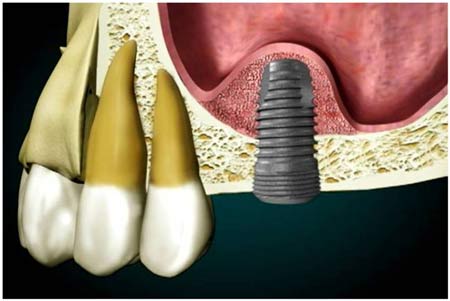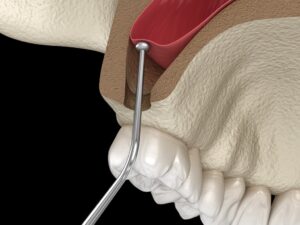SINUS LIFTING
Sinus Lifting Surgery: A Vital Step for Successful Dental Implants
Sinus lifting surgery is a specialized procedure performed to enhance bone volume in the upper jaw, particularly when preparing for dental implants. This operation is necessary when the bone beneath the sinus cavity is insufficient, ensuring a stable foundation for implants and increasing the likelihood of long-term success.
What is Sinus Lifting Surgery?
Sinus lifting involves increasing the bone mass in the posterior regions of the upper jaw, which is essential for safe and effective dental implant placement. The procedure is typically carried out by maxillofacial surgeons or implant-specialist dentists. It is particularly helpful when the natural bone in the upper jaw is too thin or weak to support implants.

Why is Sinus Lifting Necessary?
There are several reasons why sinus lifting might be recommended before dental implant placement:
Insufficient Bone Volume: In cases where the upper jaw lacks enough bone structure to support an implant, sinus lifting adds the necessary volume for successful placement.
Low Bone Beneath the Sinus Cavity: When there is minimal bone under the maxillary sinus cavity, lifting the sinus floor and adding a bone graft provides a stable base for the implant.
Improved Implant Success: Sinus lifting greatly enhances the chances of a successful dental implant procedure, especially in areas where the bone is naturally thin.
This surgery is often essential for patients seeking dental implants in the upper jaw’s back regions, where the sinus cavity can limit available bone. By increasing bone mass, sinus lifting prepares the area for implant surgery, ensuring stability and longevity.
How is Sinus Lifting Surgery Performed?
Sinus lifting surgery typically involves the following steps:
Local Anesthetic: The procedure begins with local anesthesia to numb the treatment area.
Sinus Floor Lifting: The surgeon carefully lifts the sinus floor to make room for additional bone volume.
Bone Graft Insertion: A bone graft is placed into the sinus cavity to increase the bone available for the implant. The graft material can come from the patient’s own body, synthetic sources, or donor bone.
Suturing: After the bone graft is inserted, the surgical site is closed with sutures.
The bone graft will eventually integrate with the natural bone, creating a strong base for the future dental implant.

Post-Surgery Care and Considerations
To ensure proper healing and the best outcomes after sinus lifting surgery, patients should follow these important guidelines:
Eat on the Opposite Side: For the first 24 hours, avoid chewing on the side where surgery was performed.
Food and Drink Restrictions: Refrain from eating or drinking for two hours after surgery, and then stick to soft, warm foods.
Nasal Care: Avoid pressure-based nasal cleaning and keep your mouth open when sneezing to protect the surgical site.
No Smoking: Smoking should be avoided for at least 12–24 hours, as it can hinder circulation and slow the healing process.
Cold Compress: Apply a cold compress to manage swelling.
Medication: Take prescribed medications as instructed by your doctor to manage pain and promote healing.
Stitch Removal: Sutures are typically removed around seven days after surgery.
Avoid Blood Thinners: Refrain from using aspirin or other blood thinners unless advised by your doctor.
Consult Your Doctor: If you experience unusual bleeding, swelling, or pain, consult your healthcare provider immediately.
By following these guidelines, patients can enjoy a smooth recovery and optimal results from the sinus lifting procedure.
Risks Associated with Sinus Lifting Surgery
Though generally safe, sinus lifting surgery carries some risks, like any surgical procedure. These risks may include:
Infection
Damage to the sinus membrane
Implant failure
Bone graft material leakage
Pain, swelling, or healing complications
Working closely with your surgeon before and after surgery and adhering to care instructions can help minimize these risks and ensure a successful outcome.